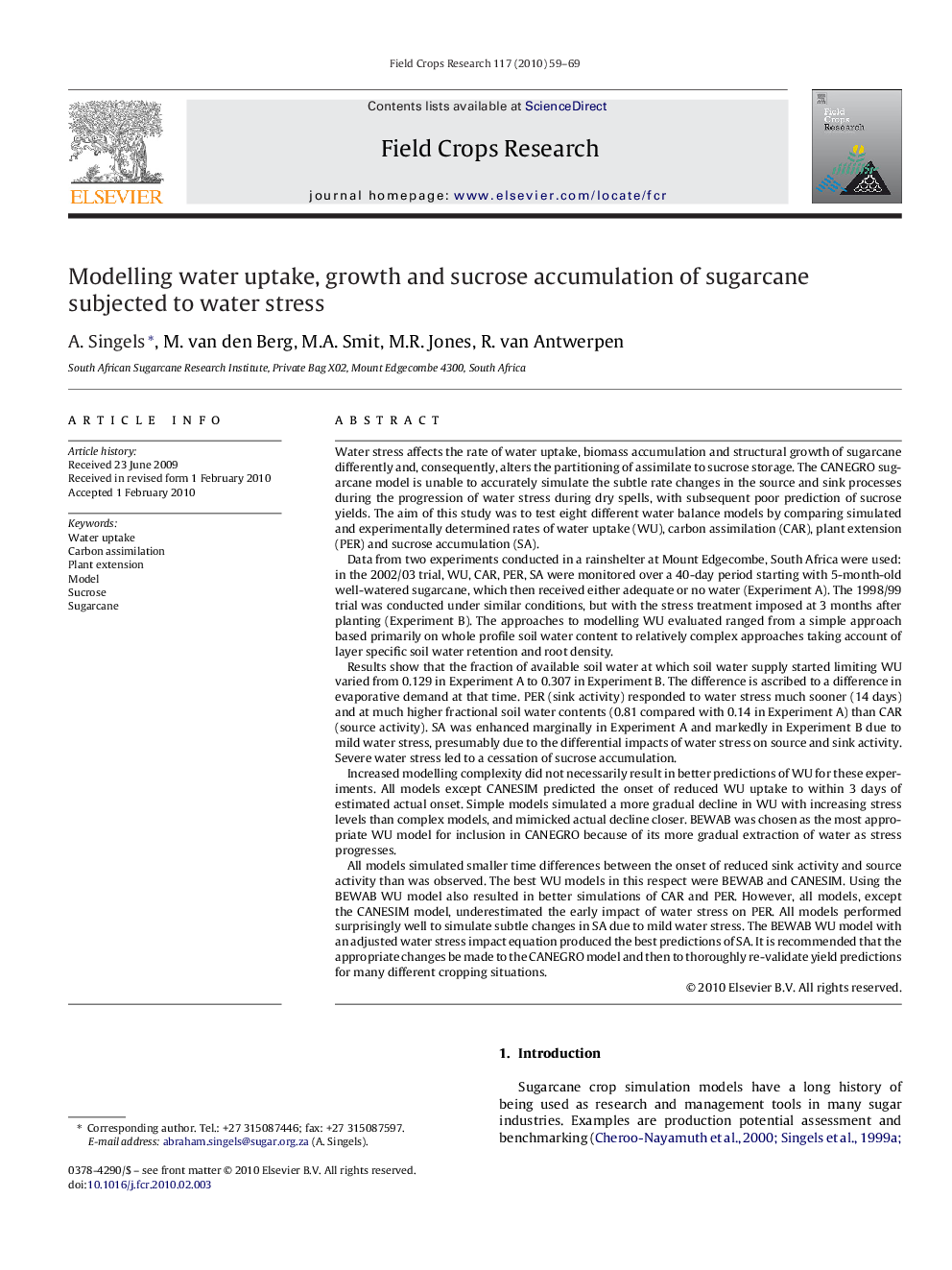| Article ID | Journal | Published Year | Pages | File Type |
|---|---|---|---|---|
| 4511001 | Field Crops Research | 2010 | 11 Pages |
Water stress affects the rate of water uptake, biomass accumulation and structural growth of sugarcane differently and, consequently, alters the partitioning of assimilate to sucrose storage. The CANEGRO sugarcane model is unable to accurately simulate the subtle rate changes in the source and sink processes during the progression of water stress during dry spells, with subsequent poor prediction of sucrose yields. The aim of this study was to test eight different water balance models by comparing simulated and experimentally determined rates of water uptake (WU), carbon assimilation (CAR), plant extension (PER) and sucrose accumulation (SA).Data from two experiments conducted in a rainshelter at Mount Edgecombe, South Africa were used: in the 2002/03 trial, WU, CAR, PER, SA were monitored over a 40-day period starting with 5-month-old well-watered sugarcane, which then received either adequate or no water (Experiment A). The 1998/99 trial was conducted under similar conditions, but with the stress treatment imposed at 3 months after planting (Experiment B). The approaches to modelling WU evaluated ranged from a simple approach based primarily on whole profile soil water content to relatively complex approaches taking account of layer specific soil water retention and root density.Results show that the fraction of available soil water at which soil water supply started limiting WU varied from 0.129 in Experiment A to 0.307 in Experiment B. The difference is ascribed to a difference in evaporative demand at that time. PER (sink activity) responded to water stress much sooner (14 days) and at much higher fractional soil water contents (0.81 compared with 0.14 in Experiment A) than CAR (source activity). SA was enhanced marginally in Experiment A and markedly in Experiment B due to mild water stress, presumably due to the differential impacts of water stress on source and sink activity. Severe water stress led to a cessation of sucrose accumulation.Increased modelling complexity did not necessarily result in better predictions of WU for these experiments. All models except CANESIM predicted the onset of reduced WU uptake to within 3 days of estimated actual onset. Simple models simulated a more gradual decline in WU with increasing stress levels than complex models, and mimicked actual decline closer. BEWAB was chosen as the most appropriate WU model for inclusion in CANEGRO because of its more gradual extraction of water as stress progresses.All models simulated smaller time differences between the onset of reduced sink activity and source activity than was observed. The best WU models in this respect were BEWAB and CANESIM. Using the BEWAB WU model also resulted in better simulations of CAR and PER. However, all models, except the CANESIM model, underestimated the early impact of water stress on PER. All models performed surprisingly well to simulate subtle changes in SA due to mild water stress. The BEWAB WU model with an adjusted water stress impact equation produced the best predictions of SA. It is recommended that the appropriate changes be made to the CANEGRO model and then to thoroughly re-validate yield predictions for many different cropping situations.
